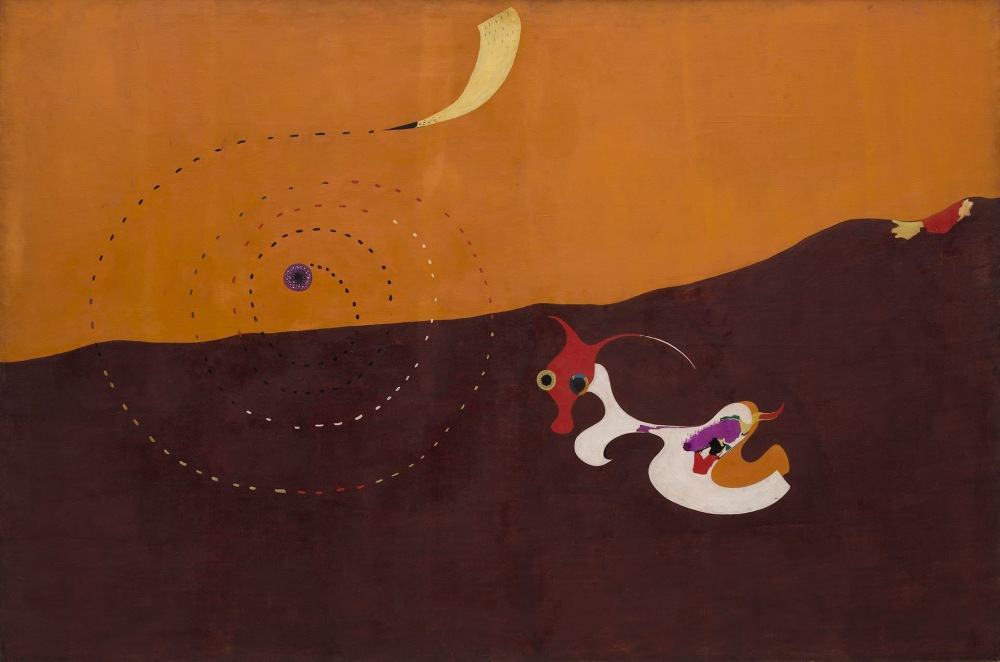
Joan Miró
Landscape (The Hare) [Paysage (Le Lièvre)], 1927
Oil on canvas
129.6 × 194.6 cm
Solomon R. Guggenheim Museum, New York
57.1459
© Successió Miró, 2023
Joan Miró (b. 1893, Barcelona; d. 1983, Palma de Mallorca) is regarded as one of the greatest artists of the 20th century. His work is admired for its radical formal innovations developed in the context of the first avant-garde movements, especially Dadaism and Surrealism. Miró was also interested in spiritual matters and fascinated by mysticism, visions, and dreams. His work, moreover, admits political readings, taking into consideration his sympathy for Catalan nationalism and his opposition to Franco’s dictatorship. Forty years after his death, his art has lost none of its seductively enigmatic nature.
Absolute Reality explores a key phase in Miró’s career, the period from 1920—his first trip to Paris— to 1945. These years are characterized by a constant flow of ideas ranging from his initial magic realism to a personal vocabulary of constellated or floating signs on ambiguous backgrounds. In this development, it becomes clear that prehistoric art, including rock paintings, petroglyphs, and statuettes, held a particular attraction for Miró, who proposed returning to the dawn of art in order to retrieve its original spiritual sense.
Miró effected a constant transformation of lived experience into art. Every mark he painted on his works corresponded to something specific, and was anchored to a profound reality that formed part of reality itself.